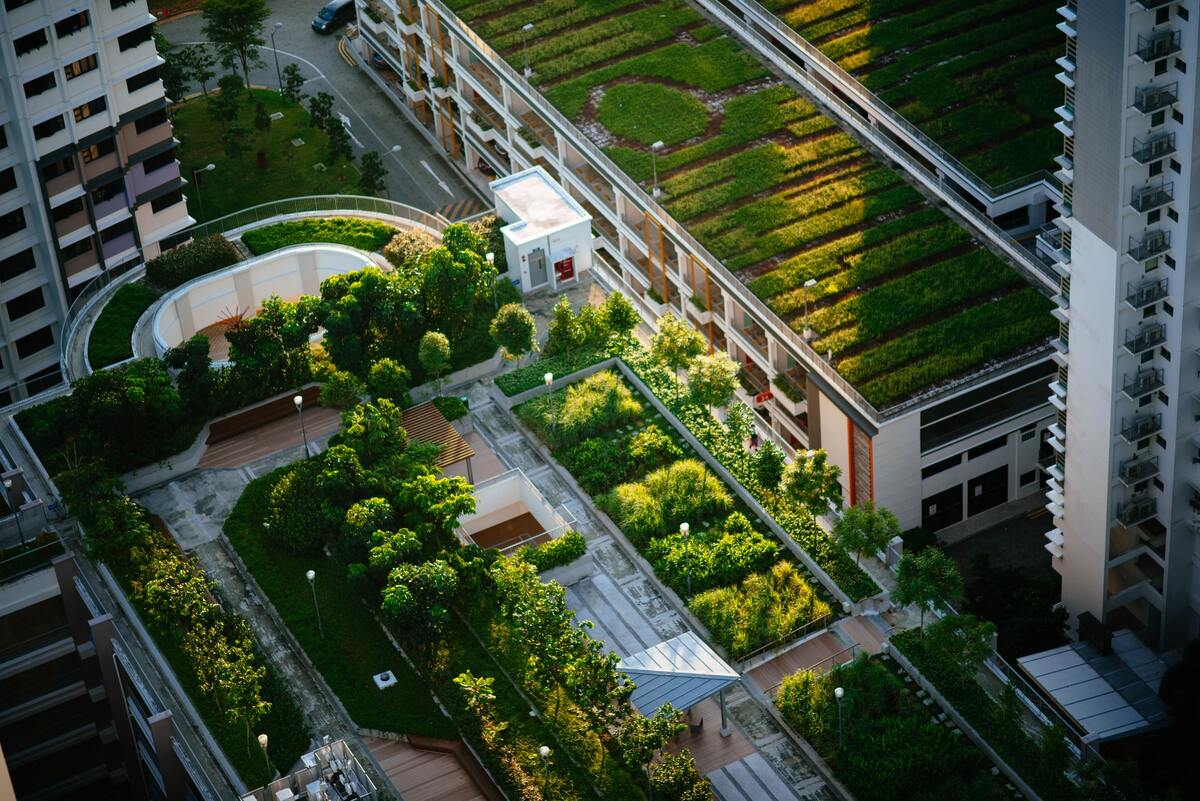Architectural Solutions to the Urban Heat Island Effect

Global warming started as a buzzword to get people to care about the planet, but there is no hiding from the fact that Earth is getting hotter every year. According to climate scientists, the planet has been getting 0.14°F (0.08°C) hotter every decade since 1880, with the rate doubling to 0.32°F (0.18°C) in the last 40 years.
This warming trend affects the entire planet, but some parts of the world are getting warmer than others. The urban heat island effect means cities – especially ones filled with densely packed buildings – tend to develop much higher temperatures.
On average, cities can be up to 22°F hotter than less-developed areas, with homes that don’t have air conditioning often even hotter. This creates a dangerous environment that can, in some circumstances, be fatal.
Installing air conditioners isn’t the only way to combat this growing heat problem. How can city planners combat the urban heat island effect with architectural solutions?
Building Green Spaces
One of the signifiers of modern urbanization is a shortage of green spaces. Trees are cut down and fields are plowed under to make room for highrises, businesses, and parking garages. It may have been a sign of progress in the past, but now it’s one of the primary reasons why urban centers generate more heat than their less-developed neighbors.
There is nothing to provide shade or absorb some of the heat before it can radiate upward. In existing cities, there aren’t a lot of spaces that would be easy to reclaim or restore to their former glory, but that doesn’t mean those city planners and civil engineers are without options.
A plant-covered highrise known as Urban Forest, designed by Koichi Takada Architects, is planned for Brisbane, Australia. This 30-story building includes up to 392 individual apartments plus a rooftop garden and a public park. While architects are designing Urban Forest from the foundation up as a green building, existing structures could easily be adapted to accommodate this sort of vertical green space.
Cool Roofs and Pavement
Traditional roofing materials for both commercial and residential structures are dark in color. In cooler climates, this can be beneficial because it can transmit heat to the building below. But in dense cities where heat islands are becoming problematic, it is no longer the best option. The same rule applies to dark asphalt roads that can collect and radiate heat, contributing to the problem.
Cool roofs and pavement – options that meet the minimum solar reflectance criteria as detailed by the Energy Star program – can help reduce the amount of heat absorbed and reflected by these surfaces.
Unlike starting from the ground up to create better options for heat management in dense cities, adding cool roof coatings only adds an additional $0.75-$3.00 per square foot to construction costs, depending on the materials and the slope.
Green Roofs
There is a lot of existing roof space in the average city, and most of it is covered by dark shingles, black tar paper, or other heat-absorbing materials. That’s a lot of square footage that can be turned into green roofs that help absorb heat rather than radiating it and contributing to the problem of urban heat islands.
These come in two forms: extensive and intensive green roofs.
Extensive green roofs have a shallow growing medium – usually 2-4” – and don’t require a lot of extra structural support. Once installed, landscapers can then add hardy plants and grasses that don’t require much additional maintenance once planted.
Intensive green roofs, on the other hand, are designed to resemble parks or gardens. They need a deeper growing medium and, as such, require more additional structural support to handle the weight. These can become great communal spaces for apartment buildings or businesses, but they do require a lot more maintenance than the other option.
Architectural Solutions to the Urban Heat Island Effect
The planet is getting warmer every year, and despite the move to remote work and what appeared to be a mass exodus from city centers, metro areas aren’t getting smaller.
Even if countries around the world come together to reduce global carbon emissions, there will still be a lot of hot summers in the future. To protect city residents from rising temperatures, a focus on creating a cooler future will become necessary.



